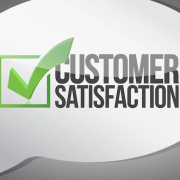Maximizing Small Business Efficiency: Beyond IT Systems
In today’s fast-paced business landscape, small businesses face the daunting task of staying competitive while managing limited resources.
As a small business owner myself, I understand the importance of leveraging technology to streamline operations and boost productivity. Indeed, investing in IT systems or apps can be a game-changer, enabling us to automate tasks, analyze data, and enhance communication with customers and employees.
However, simply adopting a program is not a magic bullet for success.
True optimization lies in the strategic implementation of these tools to align with the unique goals and needs of our company.
There’s no denying the transformative power of IT systems and apps. They can revolutionize how we conduct business, from managing inventory and tracking expenses to reaching new markets and delivering exceptional customer service.
For instance, cloud-based project management tools allow teams to collaborate seamlessly regardless of their location, while customer relationship management (CRM) software enables us to personalize interactions and nurture client relationships.
These technologies not only improve efficiency but also empower us to make data-driven decisions that drive growth.
Yet, the effectiveness of these tools hinges on more than just their features and functionalities. It’s about how well they integrate into our existing workflows and processes.
Implementing a new program requires careful planning and consideration of factors such as employee training, data security, and scalability. Moreover, it’s essential to evaluate whether the chosen solution aligns with our business objectives and can adapt to future changes in the market.
Furthermore, technology alone cannot solve all our business challenges.
Even the most advanced IT systems are only as effective as the people using them. Therefore, fostering a culture of innovation and continuous improvement is crucial.
This involves encouraging employees to embrace new technologies, providing ongoing training and support, and soliciting feedback to identify areas for improvement. By empowering our team to take ownership of the tools at their disposal, we can maximize their impact on productivity and efficiency.
Additionally, small businesses must recognize that technology is just one piece of the puzzle. Success requires a holistic approach that encompasses not only IT systems but also strategic planning, effective leadership, and a customer-centric mindset. 
We must continuously reassess our goals and priorities, seeking opportunities to optimize processes and drive innovation. Whether it’s streamlining supply chain logistics, enhancing digital marketing efforts, or improving internal communication, every decision should be guided by our overarching vision for success.
In conclusion, while IT systems and apps play a vital role in optimizing small business productivity and efficiency, their true value lies in how we implement and leverage them.
By aligning technology with our strategic objectives, empowering our team, and fostering a culture of innovation, we can unlock the full potential of these tools to drive growth and achieve lasting success.
Let’s embrace the digital transformation journey with a clear vision and a commitment to excellence.












